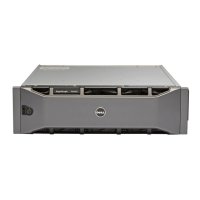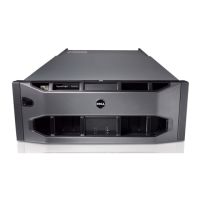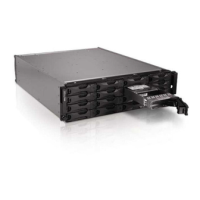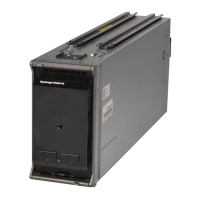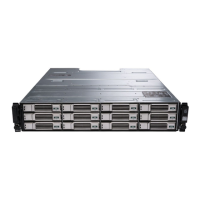Dell EqualLogic Configuration Guide v11.3
o Aggregate the required number of 1GbE ports from each blade I/O module stack for
redundancy based on inter-switch trunk sizing guidelines in Section 4.3.1.
o Distribute 1GbE links among multiple switches within each I/O module stack.
o Distribute 1GbE links evenly between all switches within the external switch stack.
If blade I/O modules are NOT stacked:
o Aggregate the required number of 1GbE ports from each switch to one external switch if
external switches are not stacked.
o Aggregate at least two 1GbE ports from each switch to two different external switches if
external switches are stacked.
5.2 Single M1000e Enclosure Integration
For single M1000e enclosure, the two redundant switches in the fabric slots (B1 & B2 or C1 & C2) should
be stacked together as shown in Figure 15 below.
Figure 15 Single Enclosure Switch Stacking
5.3 Multiple M1000e Enclosure Integration
Two options are available when configuring the blade I/O modules into stacks:
Dual I/O Module Stacks
The I/O modules in one half of the redundant fabric (B1 or C1) of each M1000e enclosure should be
stacked together and the I/O modules in the other half of the redundant fabric (B2 or C2) should be
stacked together as shown in Figure 16 below. This configuration scales the number of M1000e blade
enclosures in parallel with the maximum stacking count for each I/O module vendor. In the case of the
M1000e, the maximum number of I/O modules per stack is 9 modules for Cisco® Catalyst® 3130 family
of switches and 10 modules for the PowerConnect M6220. This is the preferred method of stacking the
M1000e chassis for EqualLogic.

